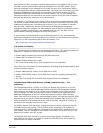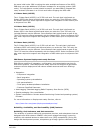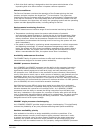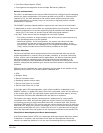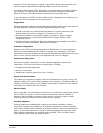
IBM United States Hardware Announcement
110-009
IBM is a registered trademark of International Business Machines Corporation
18
• First Failure Data Capture (FFDC)
• Converged service approach across multiple IBM server platforms
Service environments
The HMC is a dedicated server that provides functions for configuring and managing
servers for either partitioned or full-system partition using a GUI or command-line
interface (CLI). An HMC attached to the system allows support personnel (with
client authorization) to remotely log in to review error logs and perform remote
maintenance if required.
The POWER7 processor-based platforms support two main service environments:
• Attachment to one or more HMCs is a supported option by the system. This is the
default configuration for servers supporting logical partitions with dedicated or
virtual I/O. In this case, all servers have at least one logical partition.
• No HMC. There are two service strategies for non-HMC systems
– Full system partition: A single partition owns all the server resources and only
one operating system may be installed.
– Partitioned system: In this configuration, the system can have more than
one partition and can be running more than one operating system. In this
environment, partitions are managed by the Integrated Virtualization Manager
(IVM), which provides some of the functions provided by the HMC.
Service Interface
The Service Interface allows support personnel to communicate with the service
support applications in a server using a console, interface, or terminal. Delivering
a clear, concise view of available service applications, the Service Interface allows
the support team to manage system resources and service information in an
efficient and effective way. Applications available via the Service Interface are
carefully configured and placed to give service providers access to important service
functions.
Different service interfaces are used, depending on the state of the system and its
operating environment. The primary service interfaces are:
• LEDs
• Operator Panel
• Service Processor menu
• Operating system service menu
• Service Focal Point on the HMC
• Service Focal Point Lite on IVM
In the light path LED implementation, when a fault condition is detected on the
POWER7 system, an amber FRU fault LED will be illuminated, which will be rolled up
to the system fault LED. The light path system pinpoints the exact part by turning
on the amber FRU fault LED associated with the part to be replaced.
The system can clearly identify components for replacement by using specific
component-level LEDs, and can also guide the servicer directly to the component
by signaling (turning on solid) the system fault LED, enclosure fault LED, and the
component FRU fault LED. The servicer can also use the identify function to blink the
FRU-level LED. When this function is activated, a roll-up to the blue enclosure locate
and system locate LEDs will occur. These LEDs will turn on solid and can be used to
follow the light path from the system to the enclosure and down to the specific FRU.
First Failure Data Capture and Error Data Analysis
First Failure Data Capture (FFDC) is a technique that helps ensure that when a fault
is detected in a system, the root cause of the fault will be captured without the
need to re-create the problem or run any sort of extending tracing or diagnostics




